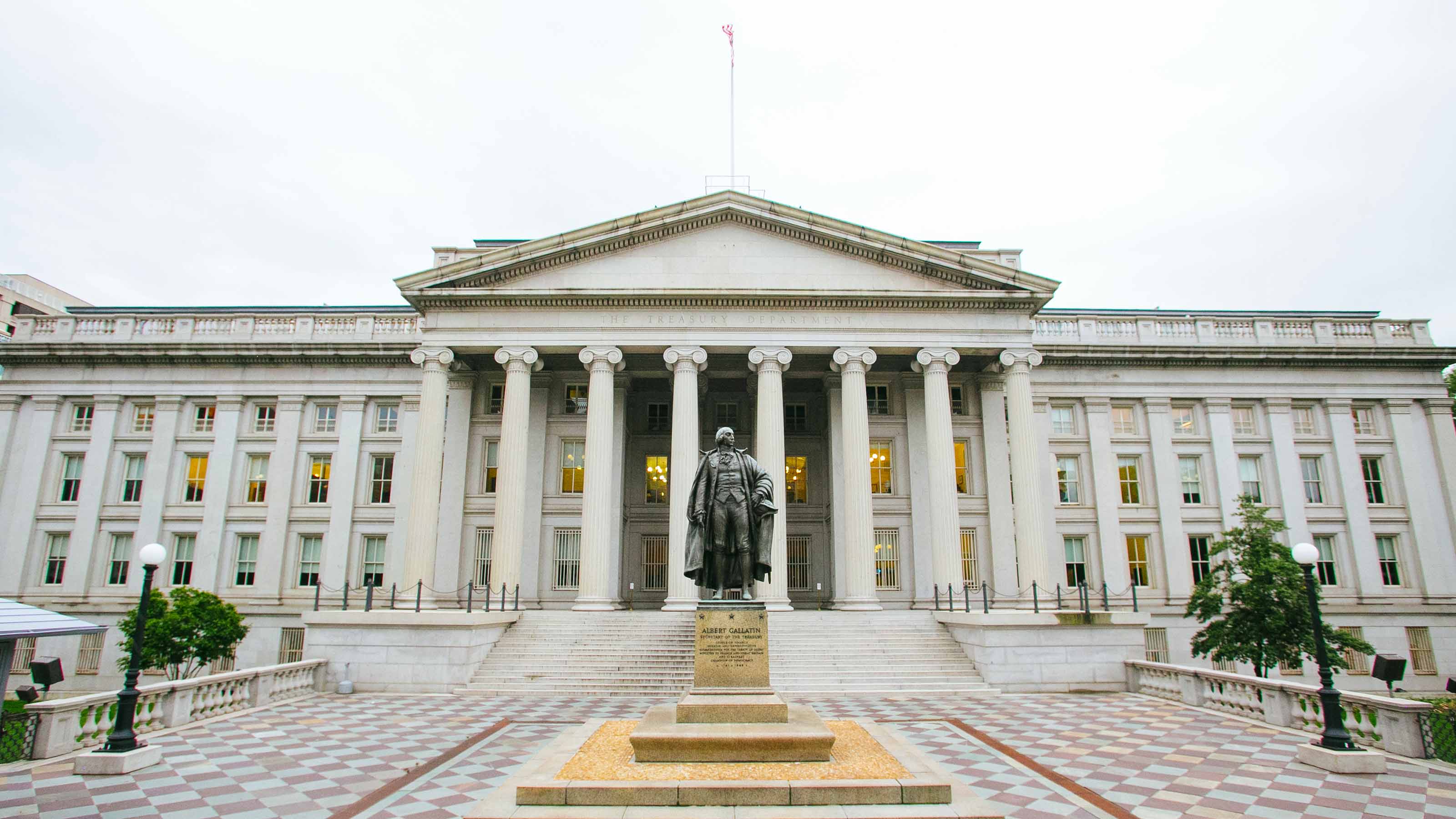Stay Calm Amid Bond Market Chaos
The risk is that you’ll lock your money in a low-yield prison just in time for normalcy to return to the financial markets.


I won’t mince words: “Lower for longer,” my overriding view of fixed-income yields, is trending toward “lowest imaginable.” Expect the imminent return of zero, or near-zero, rates on money market funds, three- and six-month CDs, and bank deposits. Bonds with 4% and 5% coupons will be called in bunches by their issuers. Mortgage refis will cut the payouts from Ginnie Mae funds. More dividend erosion is in store for short- and intermediate-term bond funds.
Is the slide in yields a disaster for you and me? Not immediately, if you own, directly or through funds, noncallable investment-grade bonds or government and municipal bonds with decent coupons and many years to maturity. Credit is sound—outside of oil and gas and retail, and maybe airlines (unless they get government help)—so 98% of all bonds will pay on schedule even if economic growth hibernates for summer. But the daily pressure for interest rates to plunge further comes from many sides. And that’s what frightens me.
Start with the stock market. It’s an impulsive polling booth where orderly price declines due to tactical selling are supercharged by technical scourges such as rapid-fire hedge-fund trading, margin calls and impaired liquidity in options and futures. The trillions of dollars escaping stocks are hyper-inflating bond prices (that means lower yields, which move in the opposite direction). Meanwhile, politicians and central bankers imagine that interest rate cuts can repel economic havoc. That’s questionable.
From just $107.88 $24.99 for Kiplinger Personal Finance
Become a smarter, better informed investor. Subscribe from just $107.88 $24.99, plus get up to 4 Special Issues

Sign up for Kiplinger’s Free Newsletters
Profit and prosper with the best of expert advice on investing, taxes, retirement, personal finance and more - straight to your e-mail.
Profit and prosper with the best of expert advice - straight to your e-mail.
The risk for income investors. The real nightmare scenario is that you lock your money in a low-yield prison just in time for normalcy to return to the financial markets. At some point, the interest-rate curve will trace a V—because if 10-year Treasury yields can travel from 1.5% to 0.5% in a fortnight, the reverse is also possible. A reversal could start as soon as the health headlines are less dire and stocks rally for longer than a few hours.
Fixed-income markets will then confront a simultaneous buying strike and profit-taking spree. Positive total returns—such as the 2.4% delivered year to date through March 13 by the Bloomberg Barclays Aggregate Bond index—could flip to losses. I would consider exiting long-term Treasuries rather than blindly using them as a haven from chaos elsewhere.
Where would I look instead? Municipal bonds are mostly keeping their distance from this chaos. And the ratio of tax-free to taxable yields is again favorable. Consider Vanguard Tax-Exempt ETF (symbol VTEB, $52). It yields 1.2%, equivalent to 2.0% for some taxpayers. My favorite closed-end tax-exempt fund, BNY Mellon Muni Bond Infrastructure (DMB, $12), pays a secure monthly dividend and yields an annualized 5.3%. After briefly trading above its net asset value, the fund is discounted again.
Actively managed, go-anywhere bond funds are made for challenging times, including FPA New Income (FPNIX), Metropolitan West Flexible Income (MWFSX), Osterweis Total Return (OSTRX), PGIM Total Return (PDBAX) and RiverNorth DoubleLine Strategic Income (RNDLX). Their net asset values won’t fall apart if Treasury yields bounce. Nor will the payouts crater—though I grant they may shrink a little—because of their mix of assets.
Well-screened high-yield bonds and preferred stocks are worth a look. AT&T’s 4.75% series C preferreds, issued at $25 in February, are a good value at $23.00, for a yield to call in 2025 of 5.8%. A junk fund with low exposure to energy—think TCW High Yield (TGHYX), yielding 3.3%—is fine. Don’t get too fearful. Fear rarely pays.
Profit and prosper with the best of Kiplinger's advice on investing, taxes, retirement, personal finance and much more. Delivered daily. Enter your email in the box and click Sign Me Up.

Kosnett is the editor of Kiplinger Investing for Income and writes the "Cash in Hand" column for Kiplinger Personal Finance. He is an income-investing expert who covers bonds, real estate investment trusts, oil and gas income deals, dividend stocks and anything else that pays interest and dividends. He joined Kiplinger in 1981 after six years in newspapers, including the Baltimore Sun. He is a 1976 journalism graduate from the Medill School at Northwestern University and completed an executive program at the Carnegie-Mellon University business school in 1978.
-
 How to Plan a Microvacation That Actually Feels Restful
How to Plan a Microvacation That Actually Feels RestfulHow a simple long weekend can boost your mood, reduce stress and make winter feel shorter.
-
 We're retired and fight more than ever. Should we take a break?
We're retired and fight more than ever. Should we take a break?Can taking a break save a marriage? We asked professional relationship therapists for advice.
-
 Turning 59½: 5 Planning Moves Most Pre-Retirees Overlook
Turning 59½: 5 Planning Moves Most Pre-Retirees OverlookAge 59½ isn't just when you can access your retirement savings tax-free. It also signals the start of retirement planning opportunities you shouldn't miss.
-
 What Fed Rate Cuts Mean For Fixed-Income Investors
What Fed Rate Cuts Mean For Fixed-Income InvestorsThe Fed's rate-cutting campaign has the fixed-income market set for an encore of Q4 2024.
-
 The Most Tax-Friendly States for Investing in 2025 (Hint: There Are Two)
The Most Tax-Friendly States for Investing in 2025 (Hint: There Are Two)State Taxes Living in one of these places could lower your 2025 investment taxes — especially if you invest in real estate.
-
 The Final Countdown for Retirees with Investment Income
The Final Countdown for Retirees with Investment IncomeRetirement Tax Don’t assume Social Security withholding is enough. Some retirement income may require a quarterly estimated tax payment by the September 15 deadline.
-
 Dividends Are in a Rut
Dividends Are in a RutDividends may be going through a rough patch, but income investors should exercise patience.
-
 Why Investors Needn't Worry About U.S. Credit Downgrade
Why Investors Needn't Worry About U.S. Credit DowngradeFitch Ratings The United States saw its credit rating downgraded for just the second time in history, but experts aren't worried about the long-term damage to stocks.
-
 Municipal Bonds Stand Firm
Municipal Bonds Stand FirmIf you have the cash to invest, municipal bonds are a worthy alternative to CDs or Treasuries – even as they stare down credit-market Armageddon.
-
 High Yields From High-Rate Lenders
High Yields From High-Rate LendersInvestors seeking out high yields can find them in high-rate lenders, non-bank lenders and a few financial REITs.
-
 Time to Consider Foreign Bonds
Time to Consider Foreign BondsIn 2023, foreign bonds deserve a place on the fringes of a total-return-oriented fixed-income portfolio.